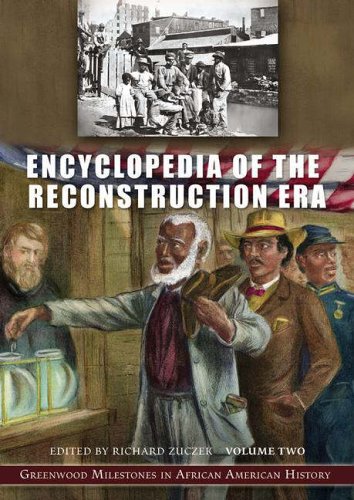

Most ebook files are in PDF format, so you can easily read them using various software such as Foxit Reader or directly on the Google Chrome browser.
Some ebook files are released by publishers in other formats such as .awz, .mobi, .epub, .fb2, etc. You may need to install specific software to read these formats on mobile/PC, such as Calibre.
Please read the tutorial at this link: https://ebookbell.com/faq
We offer FREE conversion to the popular formats you request; however, this may take some time. Therefore, right after payment, please email us, and we will try to provide the service as quickly as possible.
For some exceptional file formats or broken links (if any), please refrain from opening any disputes. Instead, email us first, and we will try to assist within a maximum of 6 hours.
EbookBell Team

4.3
38 reviewsReconstruction sought to bring order from the tremendous social, political, economic, physical, and constitutional changes wrought by secession and the Civil War, changes that included the abolition of slavery, the expansion of governmental power and constitutional jurisdiction, the rise of the Republican Party, the explosion of northern industry and the national market, and the appearance of a social dynamism that supported struggles by new social groups for political and civil equality.
In American history, Reconstruction is the term applied to the period 1862-1877, when the United States sought to bring order from the tremendous social, political, economic, physical, and constitutional changes wrought by secession and the Civil War.The decision by eleven southern states to attempt secession and reject the national government, and the decision by the federal government under President Abraham Lincoln to deny that attempt and enforce federal law, unleashed forces that forever changed the American Republic. These changes included the abolition of slavery, the expansion of governmental power and constitutional jurisdiction, the rise of the Republican Party, the explosion of northern industry and the national market, and the appearance of a social dynamism that supported struggles by new social groups for political and civil equality. No one anticipated the totality, the viciousness, and the intensity of the civil war, and as a result no one was prepared to deal with its consequences. Topics covered include who should direct Reconstruction; how the federal government treated conquered states, their governments, and their soldiers; the role of the freed people in the new republic; and how the war altered the Constitution, the party system, and the American economy, among many others.
Many entries describe and analyze the lives, careers, and impacts of the individuals, North and South, black and white, who shaped the course of Reconstruction, including the following: Ames, Adelbert Bruce, Blanche K. Douglass, Frederick Gordon, John B. Hancock, Winfield S. Howard, Oliver O. Pinchback, Pinckney B.S. Revels, Hiram R. Sheridan, Philip H. Wade, Benjamin F. Other entries deal with broad topics and themes related to Reconstruction and its consequences, including the following: Abolition of Slavery, Black Politicians, Black Suffrage, Bloody Shirt, Economic Policies, Race Riots, Reconstruction, Theories of Scandals During Reconstruction, State Constitutional Conventions, Violence During Reconstruction. Still other entries cover a wide variety of events, groups, acts, agencies, and amendments that were part of the story of Reconstruction, including the following: American Indians, Bureau of Refugees, Freedmen, and Abandoned Lands Compromise of 1877, Democratic Party, Fourteenth Amendment, Joint Committee on Reconstruction, Loyalty Oaths, Military Reconstruction Acts, Stalwarts, Tenure of Office Act. Among the more than 270 entries are 11 that discuss the course and consequences of Reconstruction in each of the former Confederate states, and 6 that discuss the outcome and significance of the presidential and key congressional elections held between 1864 and 1876. The encyclopedia also offers a timeline of Reconstruction, a bibliography of print and electronic information resources, a selection of primary documents, a table of important dates, numerous illustrations, and a detailed subject index.